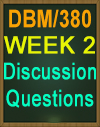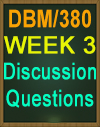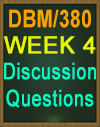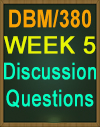| advanced |
TUTORIALS
- ARTS/125
- BCOM/231
- BCOM/275
- BIS/221
- BIS/221 T (NEW)
- BSA/310
- BSA/375 (NEW)
- BSA/376
- BSA/385 (NEW)
- BSA/515 (NEW)
- BSA/520 (NEW)
- BSA/525 (NEW)
- BSA/550 (NEW)
- BSCOM/100
- BUS/210
- BUS/212 (NEW)
- BUS/475 T (NEW)
- CIS/207 T (NEW)
- CIS/291
- CMGT/245 (NEW)
- CMGT/400 (NEW)
- CMGT/410 (NEW)
- CMGT/430
- CMGT/431 (NEW)
- CMGT/433 (NEW)
- CMGT/442 (NEW)
- CMGT/445 (NEW)
- CMGT/545 (NEW)
- CMGT/582 (NEW)
- CMGT/583 (NEW)
- COM/295
- COM/295 T (NEW)
- CSS/422 (NEW)
- CYB/110 (NEW)
- DBM/380
- ECO/365
- ECO/365 T (NEW)
- ECO/372
- ECO/372 T (NEW)
- ENG/220
- ENG/222
- ENG/223
- ENV/100
- ENV/410 (NEW)
- ETH/321
- ETH/321 T (NEW)
- FIN/370 T (NEW)
- HCS/405
- HCS/440
- HCS/451
- HCS/490
- HRM/300
- HRM/300 T (NEW)
- HRM/324
- HRM/498
- HUM/115 (NEW)
- HUM/186
- IT/200 (NEW)
- LDR/300
- LDR/300 T (NEW)
- LDRCB/535 (NEW)
- MBL/400 (NEW)
- MGT/312 T (NEW)
- MGT/362
- MGT/362 T (NEW)
- MGT/426
- MGT/498 (NEW)
- MGT/526 (NEW)
- MGTCB/526 (NEW)
- MKT/421
- MKT/421 T (NEW)
- MKT/441
- MTH/221
- NTC/255 (NEW)
- NTC/300 (NEW)
- NTC/302 (NEW)
- NTC/320
- NTC/324 (NEW)
- NTC/326
- NTC/328 (NEW)
- NTC/362 (NEW)
- NTC/409 (NEW)
- OPS/330 T (NEW)
- OPSCB/574 (NEW)
- ORGCB/535 (NEW)
- PHL/320 (NEW)
- PM/350 T (NEW)
- POS/355
- POS/408 (NEW)
- POS/408 T (NEW)
- POS/409
- PRG/211
- PRG/215
- PRG/218
- PRG/410 (NEW)
- PRG/420
- PRG/421
- PSY/300 (NEW)
- QNT/275
- SCI/220
- SOC/100
- SOC/110 (NEW)
DBM/380 Database Concepts |
||
| Or you may purchase tutorials by the Week below. | ||
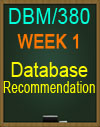 |
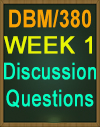 |
|
DBM/380 WEEK 1Everything listed for this week is included in purchase!
Individual: Database Recommendation Includes: Option #1 Includes: Option #2 The first and most important database-related decisions are whether to
use a database at all and, if so, which database management system to
use and why. Today there are dozens of database management
systems available; however, some are better suited to specific business
environments and applications than others. database. database model, in the context of the company's
business environment. company. recommended RDBMS.
Supporting Activity Questions (Included) NOTE: Class questions change depending on which Instructor you have, so these questions below may not match exactly.
Discussion Question: Why Relational Databases Make Sense for Big Data
Discussion Question: : Big Data: The Next New Thing? Research and discuss some other vendors with this technology. How does the NoSQL model used in big data compare to the relational model? What types of businesses might benefit from using NoSQL?
|
||
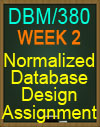 |
||
DBM/380 WEEK 2
Everything listed for this week is included in purchase!
Individual: Normalized Database Design Assignment Includes Assignment and MS Visio ERD Diagram (fully editable!) A relational database must be designed and normalized before it can
be created, populated with data, and used. Database design depends
on the business scenario(s) a database architect needs to model, but
all relational database designs benefit from being normalized.
Week 2 Discussion Questions (Included) NOTE: Class DQ questions change depending on which Instructor you have, so these questions below may not match exactly.
Supporting Activity: Null Value Think of a situation where null value should be allowed and a situation where it should not be allowed. What are the consequences of inappropriate null settings?
Supporting Activity: Many-To-Many Relationship What are some issues when working with a many-to-many relationship? Provide some examples.
Supporting Activity: Database Designer How must a database designer balance the time to complete data modeling steps with the benefits the data modeling process offers in creating a database? Consider examples from your work place and class assignments
Supporting Activity: Data Types Why it is necessary to choose appropriate data types for each data column?
|
||
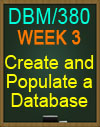 |
||
DBM/380 Week 3Everything listed for this week is included in purchase!
Individual: Create and Populate a Database For this assignment, you will create the database you designed in Week
2.
Included Week 3 Supporting Activity Questions NOTE: Class DQ questions change depending on which Instructor you have, so these questions below may not match exactly.
Supporting Activity: DBMS and Data Mining A motor vehicle maintenance center wants to improve its services by using database management systems (DBMS) and data mining. What tables are needed in such a database and how can it help improve their services?
Supporting Activity: Cardinality Constraints What are four types of cardinality constraints? Provide personal examples of each.
Supporting Activity: Primary Key How do you select the primary key from the candidate keys? How do foreign keys relate to candidate keys? Provide examples from either your workplace or class assignments.
Supporting Activity: Overall Design Under what circumstances would you break down an overall design to include individual user views? Provide examples from either your workplace or class assignments.
|
||
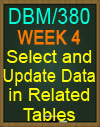 |
||
DBM/380 Week 4Everything listed for this week is included in purchase!
Individual: Select and Update Data in Related Tables Includes Option #2
Week 4 Supporting Activity Questions NOTE: Class questions change depending on which Instructor you have, so these questions below may not match exactly.
Supporting Activity: Normalization Process In your own words, describe the nature and purpose of the normalization process. Provide some examples from sources other than the readings
upporting Activity: Disadvantage of Normalizing Discuss the disadvantages of normalizing a database to a high degree of normalization. Should there be a definite rule on when to stop normalizing? Provide some examples from sources other than the readings.
Supporting Activity: Denormalization In what business database environments is denormalization appropriate and why? What would denormalization specifically involve?
|
||
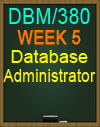 |
||
DBM/380 Week 5
Everything listed for this week is included in purchase!
Individual: Database Administrator Includes Option #1 Includes Option #2 Imagine that you have the educational background, skills, and abilities
to be a database administrator. The XYZ company recently announced
a vacancy for a database administrator position, and you are very
interested because XYZ is known as a high-paying employer that is
enjoyable to work for. Because a security breach at XYZ recently made
the news, XYZ's job posting has requested all applicants to include in You will need to research and include the education and work experience appropriate to a successful candidate for a database administrator position unless your own personal
background qualifies you for a database administrator position each approach
Week 5 Supporting Activity Questions NOTE: Class questions change depending on which Instructor you have, so these questions below may not match exactly.
Supporting Activity: Database Administrator and Architect Describe the differences between a database administrator and a database architect. How is your organization structured to handle the functions of these roles?
Supporting Activity: Database Service Locate a hosted, distributed database service. Explore its features and talk about your experiences. In what situations would an organization consider using it?
Supporting Activity: DBMS Describe the advantages and disadvantages of DBMS-provided security. Compare it to network or application security.
Supporting Activity: Database Recovery Process Suppose that the database system within your organization has failed. Describe the database recovery process.
|
||




